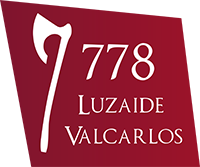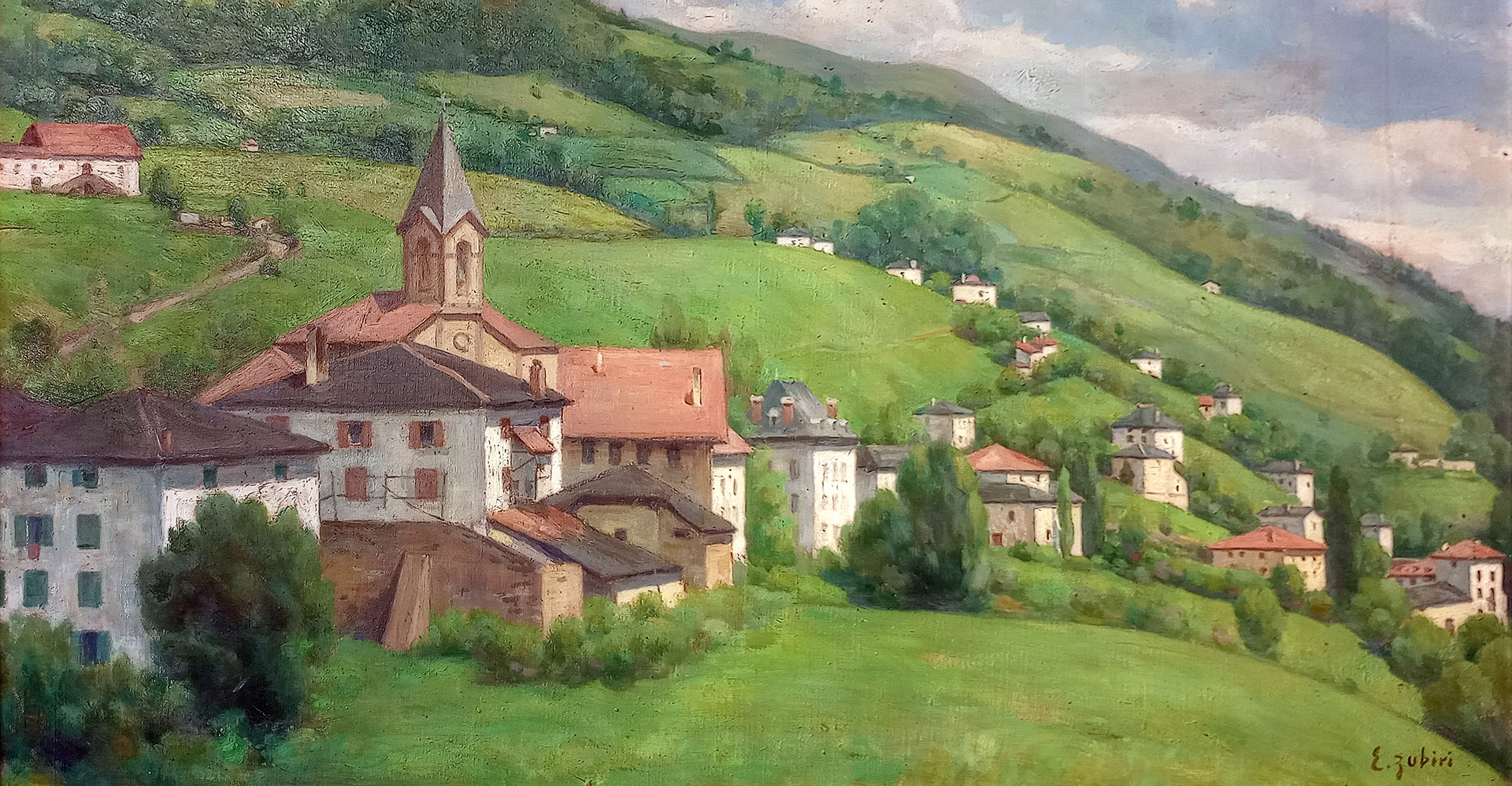In the display case and pictures we see in the kitchen, we can find various objects and prints of Luzaide/Valcarlos that illustrate the life and peculiarities of the area. These are intended to show places and customs that are or have been special to the entire village.
Luzaide/Valcarlos has a population of 460 inhabitants and covers an area of 4,470 hectares. It has 8 main neighbourhoods or centres: Aitzurre, Azoleta, Bixkar, Elizaldea, Gaindola, Gainekoleta, Pekotxeta, Ventas and Pertole. The images show various corners of these neighbourhoods.
The Basque language.
The village has been influenced by various factors throughout history, one of the most important of which has always been its location: at the foot of the Pyrenees in a narrow, steep valley, situated on the border with Lower Navarre, some 64 km from Pamplona and crossed by the road that links both sides of the Pyrenees, along which the Way of Saint James also passes.
As a result, the village has been influenced by Lower Navarre and the Pyrenees, which is evident in both its Basque language and its carnivals. The Basque language spoken in Luzaide is classified as belonging to the Lower Navarre dialect of Garazi. In the display case, we can see religious books written in Basque.

Religion and the church.
Traditionally, the Catholic religion has been very important in all villages in the area. That is why we find a few pieces dedicated to religious beliefs in this space.
Perhaps the most striking is the stone found under the display case. It is a stone from the old village church. The old temple was completely destroyed in 1794 during the War of the Convention when the village was burned and looted by French troops.
A new church was built years later, between 1799 and 1802, by the architect José Poudez, who also built Roncesvalles Hospital.
Enrique Zubiri Gortari “Manezaundi”.
He was a painter and writer born in Luzaide/Valcarlos in 1867 and who died in Pamplona in 1943.
He studied in Saint-Jean-Pied-de-Port and Paris. A remarkable artist, he was well known for being the official portrait painter for Pamplona City Council for many years.
Two of his works can be found in Luzaide: one entitled “Luzaide”, which hangs in this room, and a full-length portrait of Saint John the Baptist, which is located in the church.


Pastors in the United States.
Throughout the history of the Basque Country, it has been very common for people from all the valleys to leave for the United States of America to work as pastors. This practice was also widespread in this area of the Pyrenees.
So many people left that the church in Luzaide/Valcarlos decided to publish an annual magazine called “LUZAIDE”, which was sent to emigrants and residents in the United States. It summarised the events in the village and included a calendar.
In the display case, we can see one of those magazines, a 1963 calendar, and a photo of pastors from Luzaide in Nevada.
Luis Lerchundi.
Luis Lerchundi was an artist born in Bilbao in 1888. He studied at the Atxuri School of Arts and Crafts and worked for several years at an architecture studio in Madrid, before finally returning to Bilbao, where he began working at Delclaux y Cía., a company dedicated to the sale of glass and metals, which also had a small artistic glass workshop.
In this room, we can see 5 of his drawings, 4 of them in black and white, made for the 1963 calendar, and an oil painting depicting a dovecote in Luzaide/Valcarlos. He also illustrated several works by Satrústegi on Luzaide/Valcarlos, as he used to spend a lot of time in the village on holiday.


Old view of Luzaide/Valcarlos 
Drawing of Luzaide/Valcarlos published in the 1963 calendar. Luis Lerchundi 
Drawing of Luzaide/Valcarlos published in the 1963 calendar. Luis Lerchundi 
Drawing of Luzaide/Valcarlos published in the 1963 calendar. Luis Lerchundi 
View of Luzaide/Valcarlos with the old church tower. 
Pedro Echapare from Casa Cossin in Gañekoleta, dressed in traditional eskalapinak (wooden shoes) and galtxamotxak (woolen leggings).


